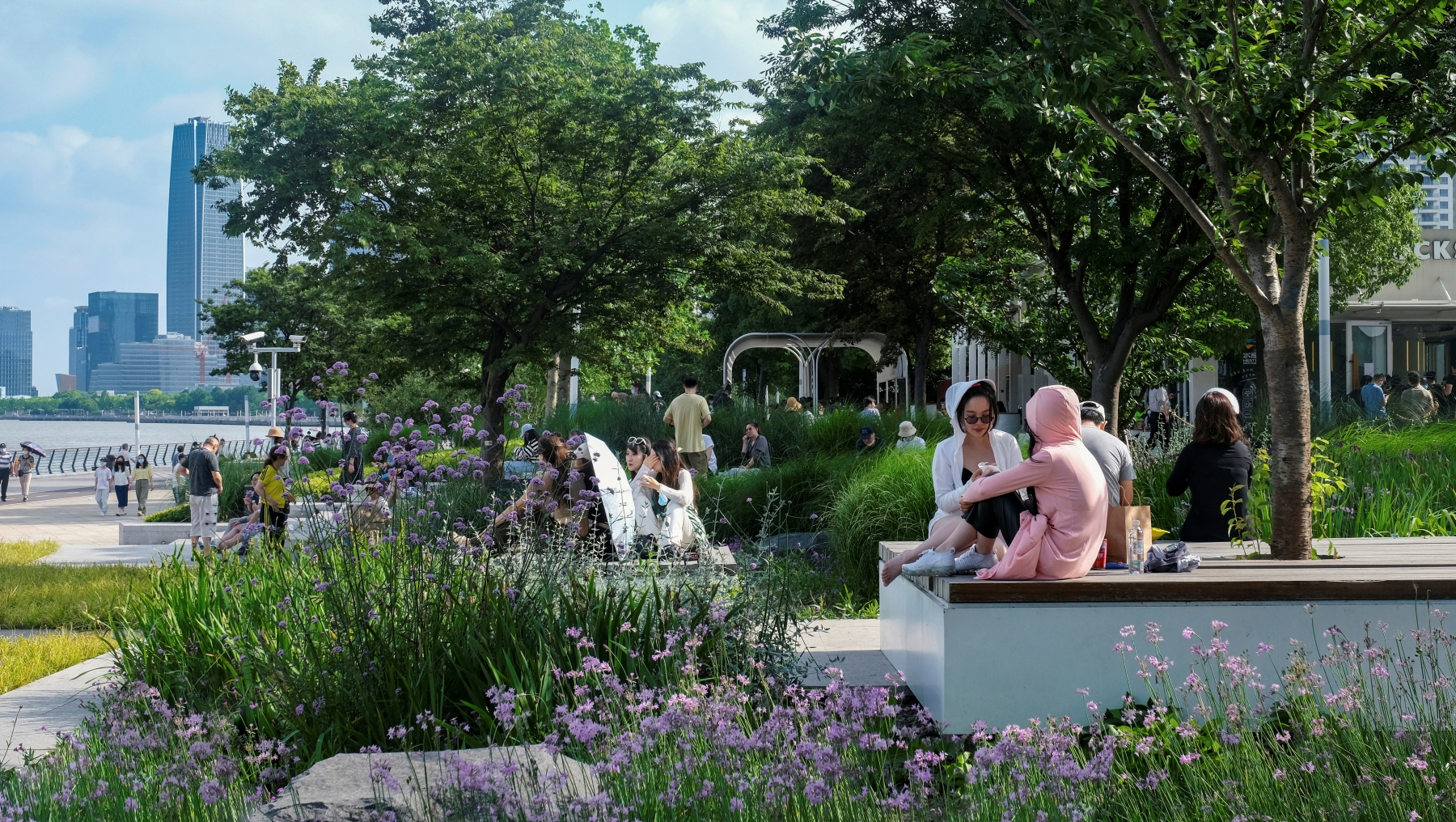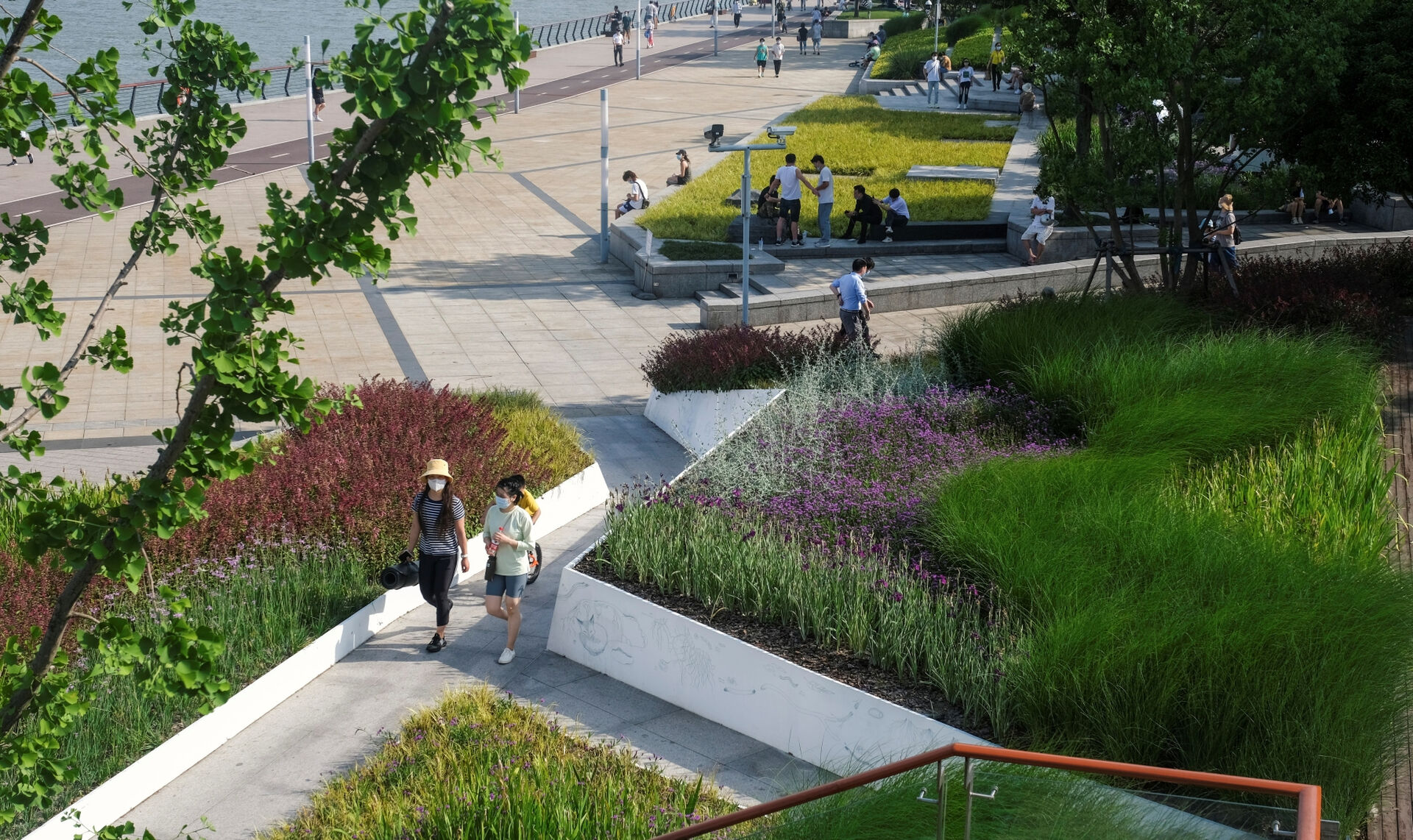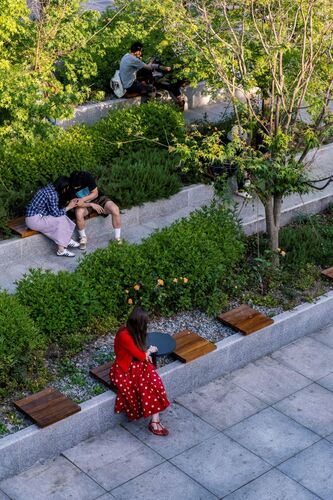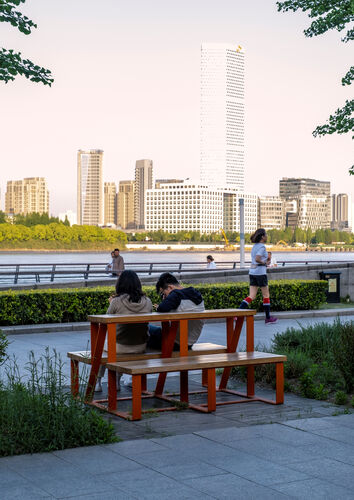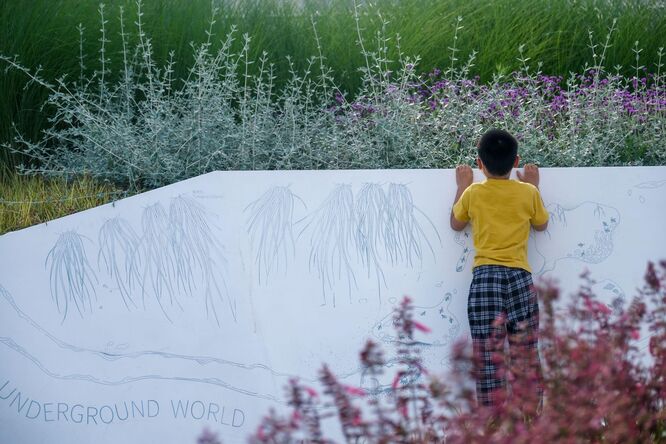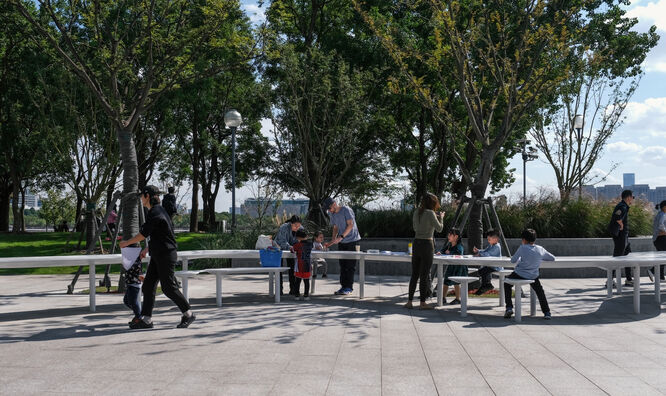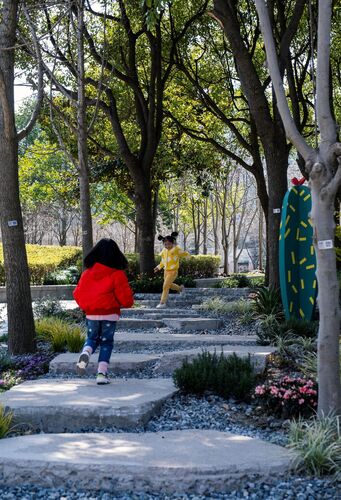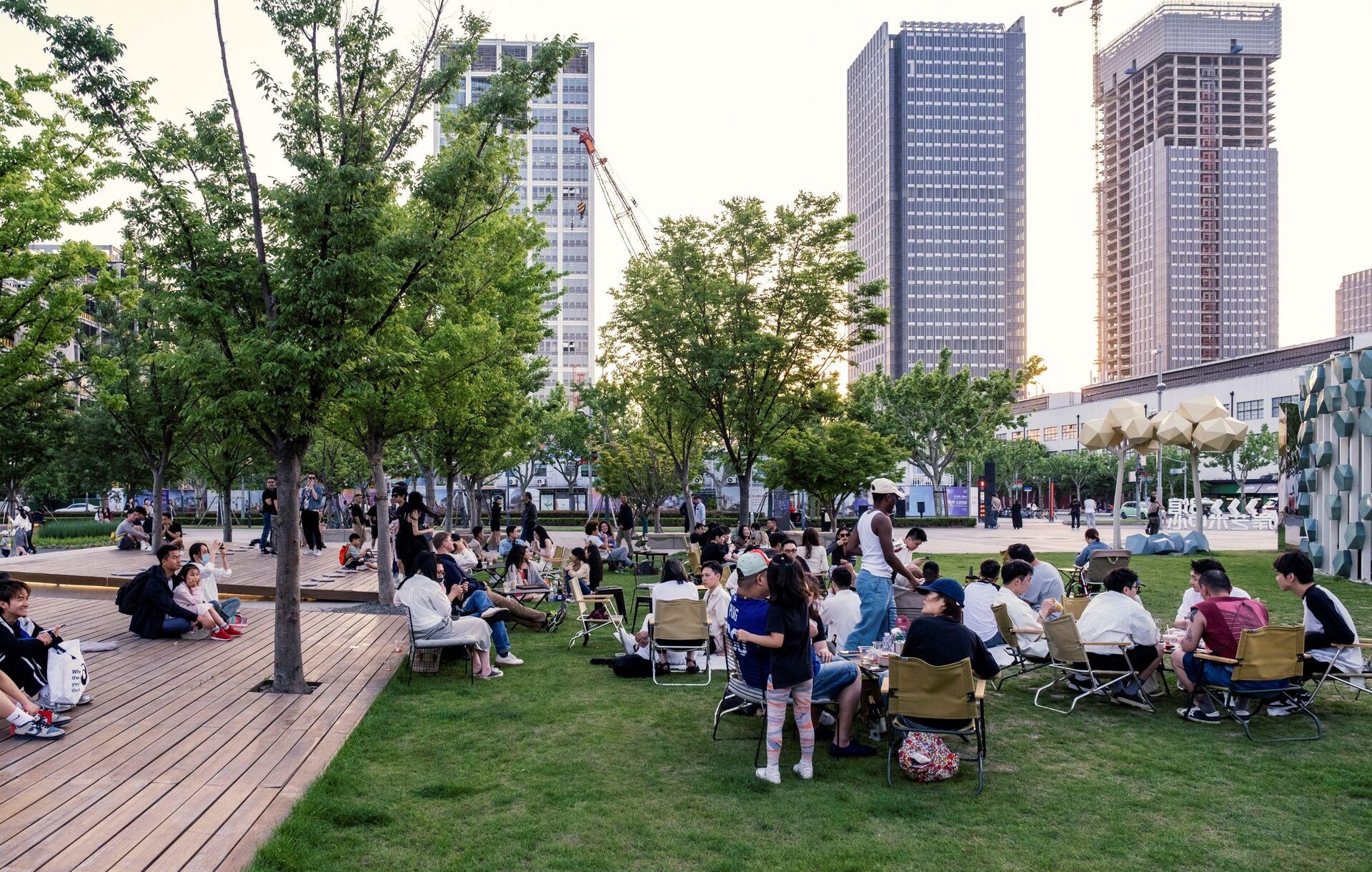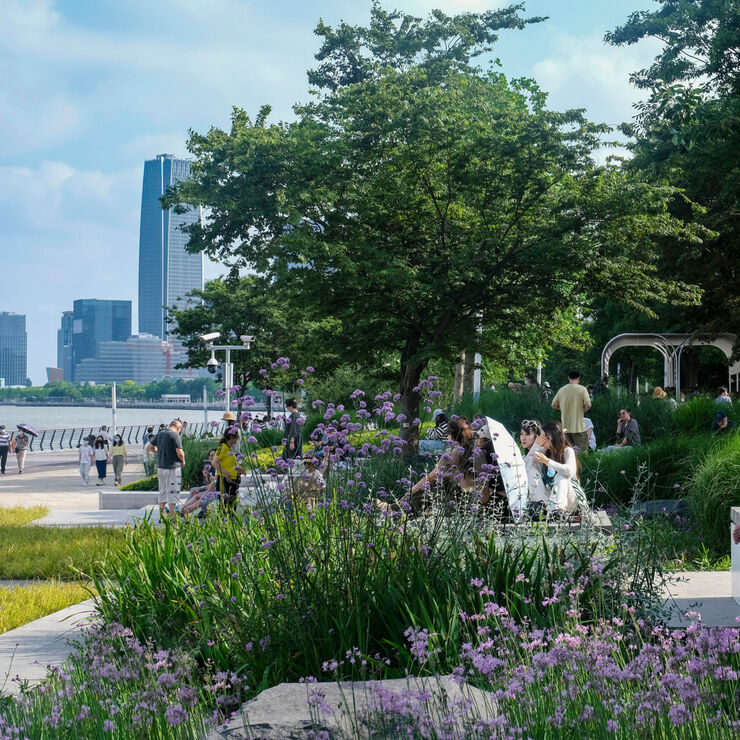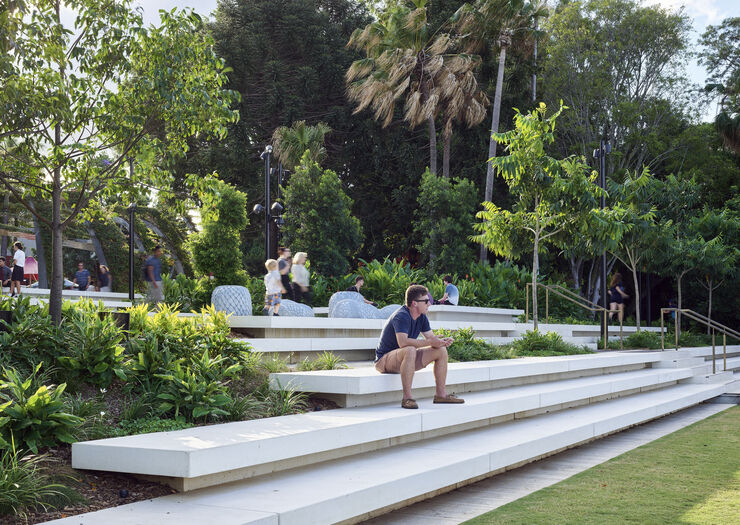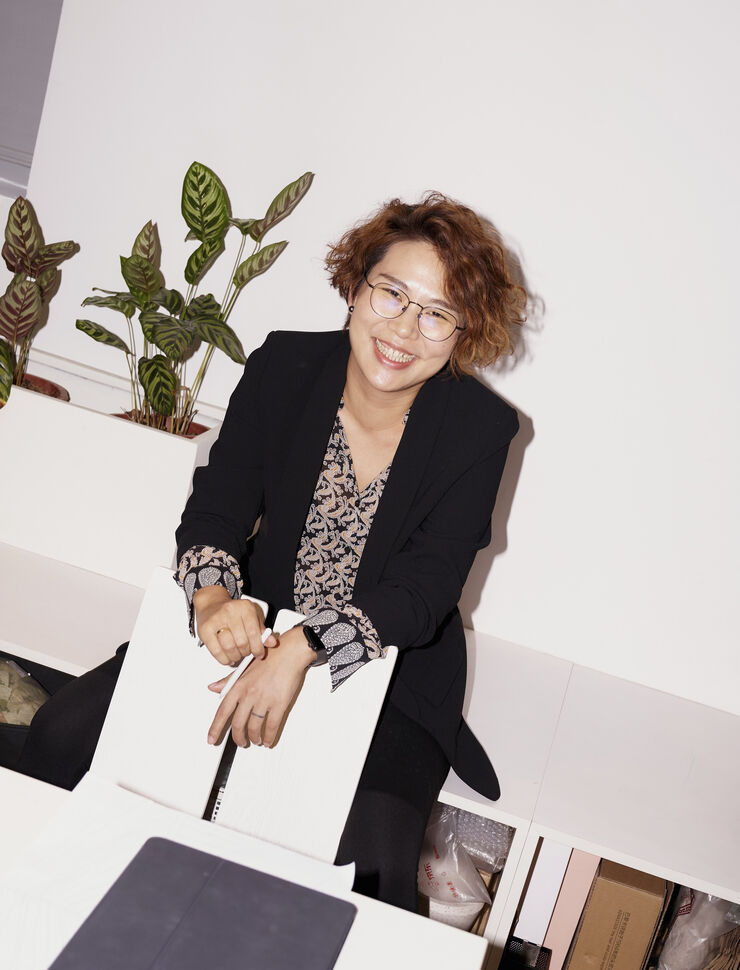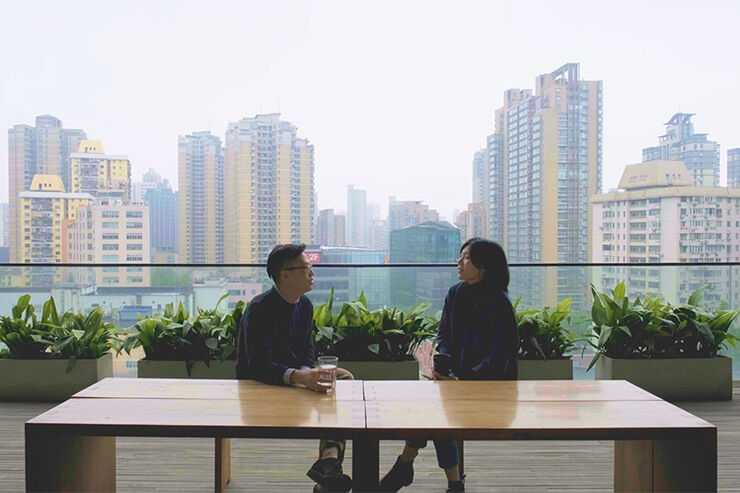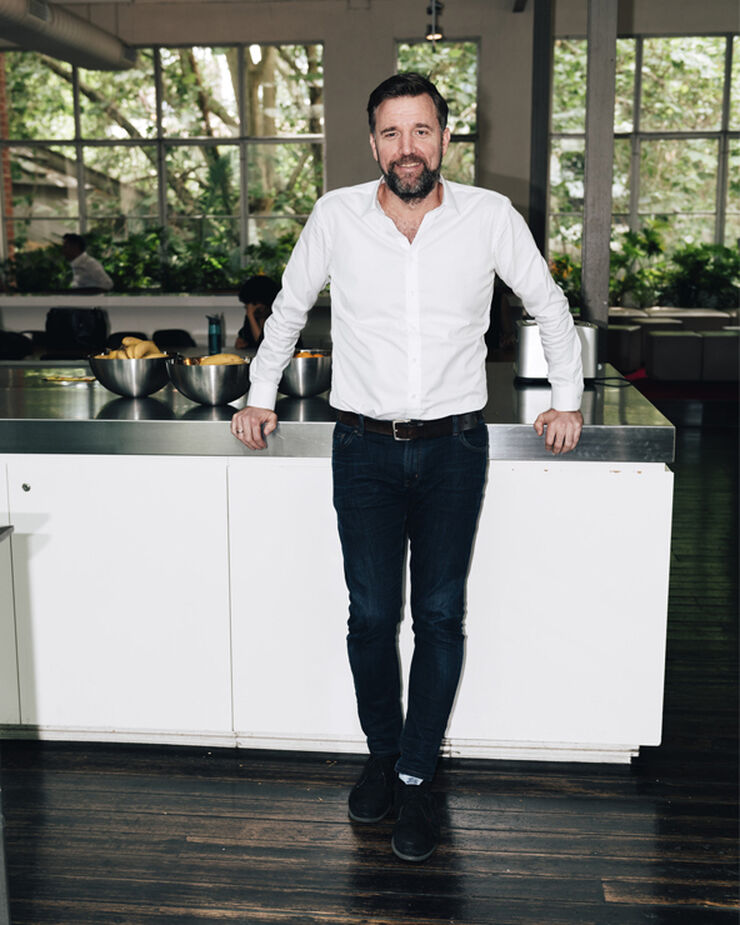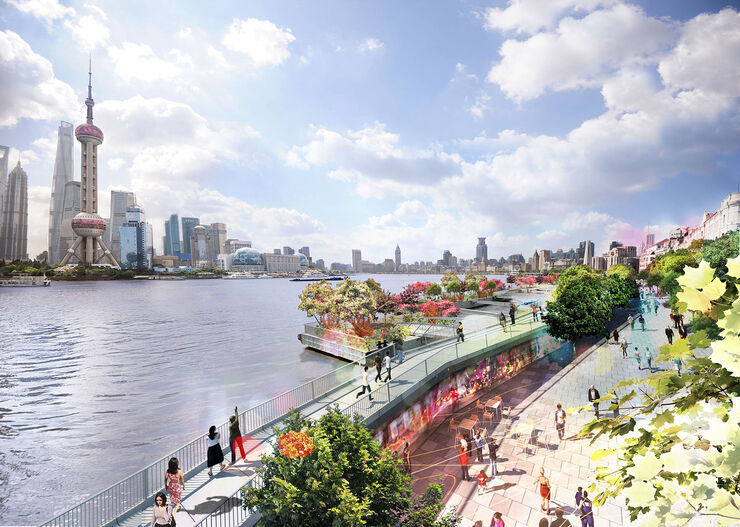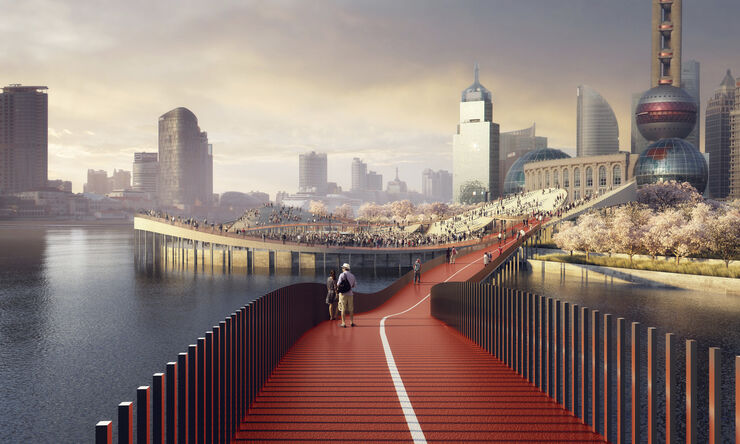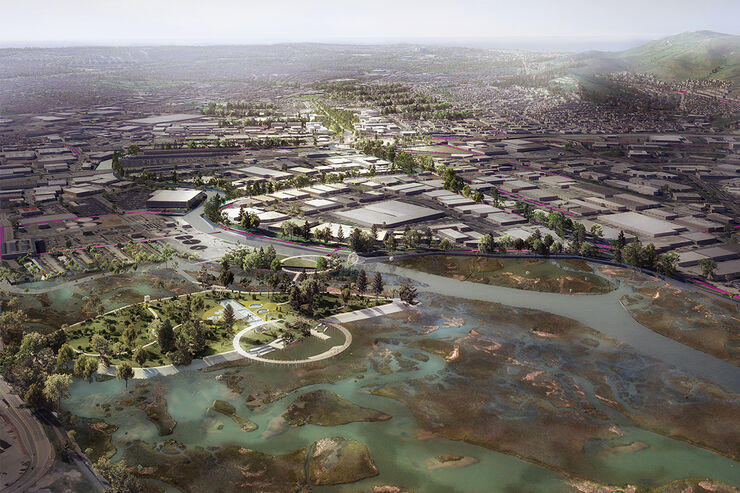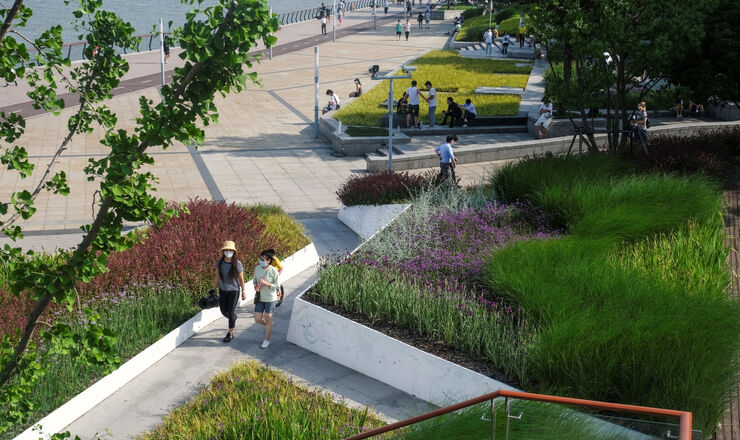OPEN SPACES ACCESSIBLE TO ALL
Our key design driver for this previously inaccessible waterfront area was to create spaces open to all (including pets!) both during the day and night. We imagined a place where people gather, take part in exercise and activities, engage in pop up events, or simply enjoy the connection to the river, the surrounding nature and stunning views of the city — a true place of respite and wellbeing.
The West Bund now boasts grassy areas for picnics, gatherings and quiet time, exercise spots and cafes, a skate ramp, bicycle lanes, pop up event spaces, sitting platforms and in a true connection to place, a long table for activities such as drawing, created by our team and inspired by the way the Huangpu River curves and flows.
We designed the landscape to complement the four types of functions and activations that are dotted along the riverfront: cultural venues, retail, food and beverage outlets, independent buildings and temporary facilities. Importantly, no buildings along the West Bund are single-use and the spaces around them are accessible to everyone.
WORKING WITH THE EXISTING LANDSCAPE
At the core of our design strategy was preserving and celebrating the existing landscape and materials. There were already many fully-grown trees along the 11.4km riverfront which we retained, along with several existing buildings. In addition to the environmental benefits, this retention is important for people who have many cherished memories of the area.
Retention also plays a key role in addressing many of the site’s challenges, such as the impact of typhoons and floods. In addition to the trees, we preserved as many existing plants as possible, with their deep and stable roots that can resist natural disasters. We also designed a detailed plan for selecting a vast array of plant species that will be positioned near flood control walls and on over-river platforms, creating a more resilient environment that can cope with extreme weather. Such a beautifully diverse landscape changes with the seasons allowing urban dwellers to connect to shifts in nature while providing an important habitat for birds and animals to rest and nest. And by applying sponge city principles of preserving, keeping and purifying water at its origin, the plants have access to water and flooding is managed.
We also reused a large portion of existing concrete panels and paving, and in keeping the hard-edge riverfront structure intact, we incorporated it into our design, using trees and plants to soften the edge.
